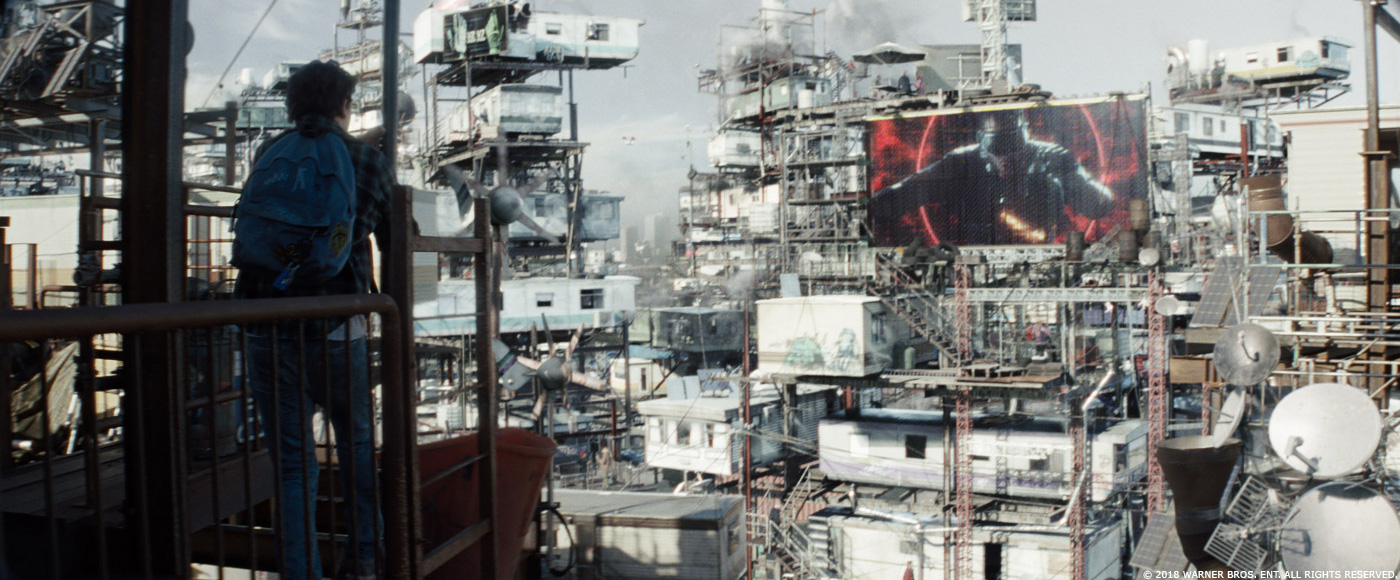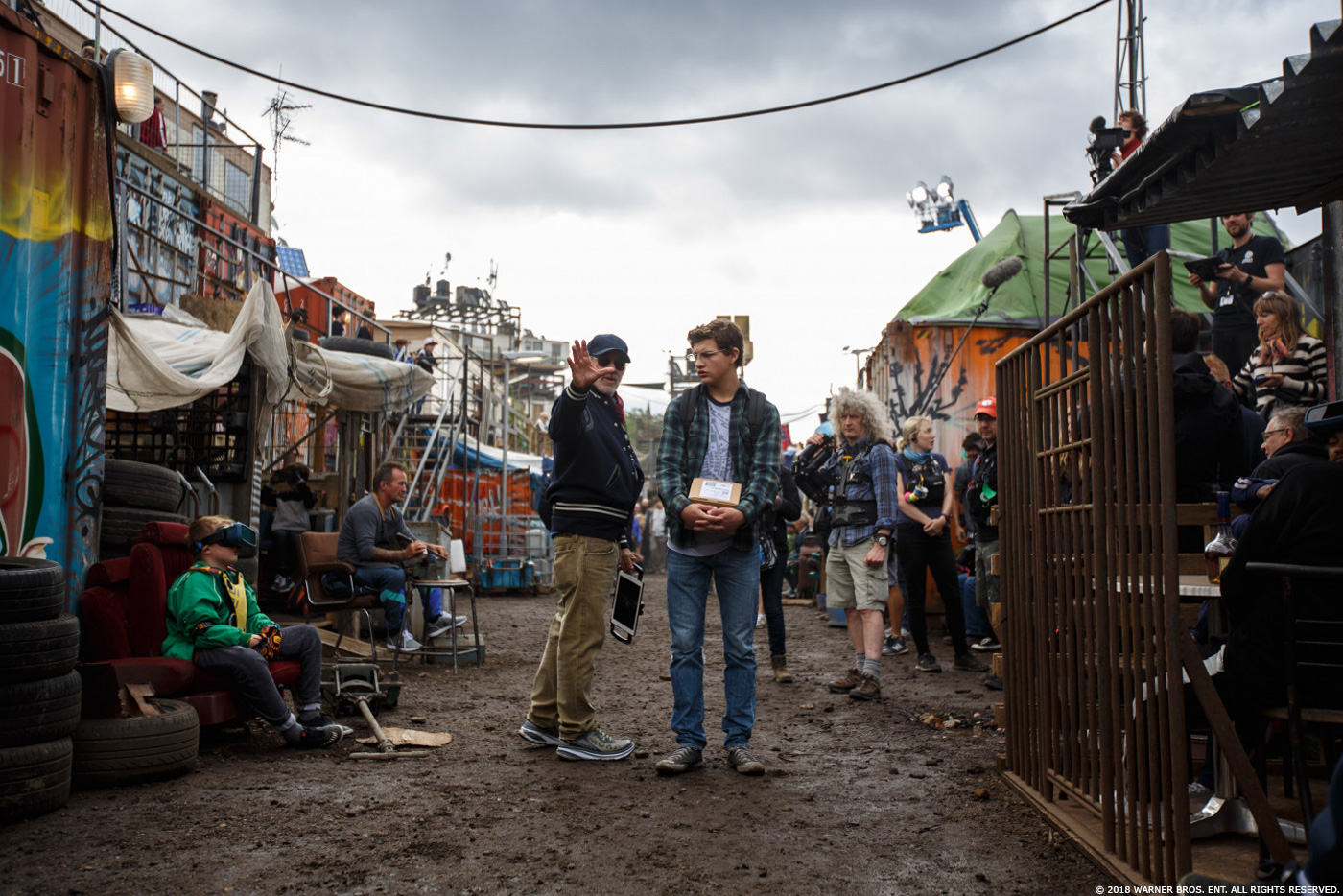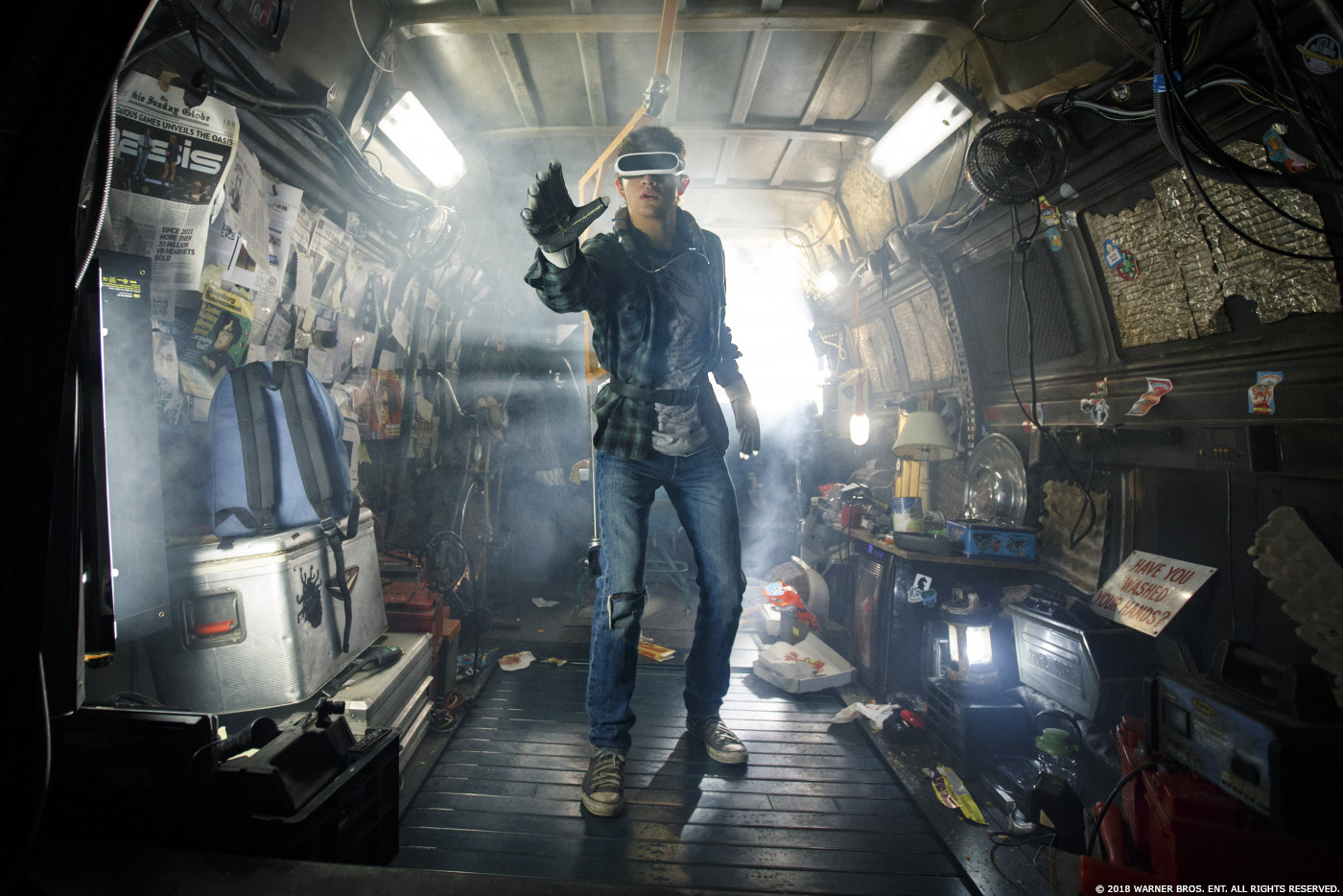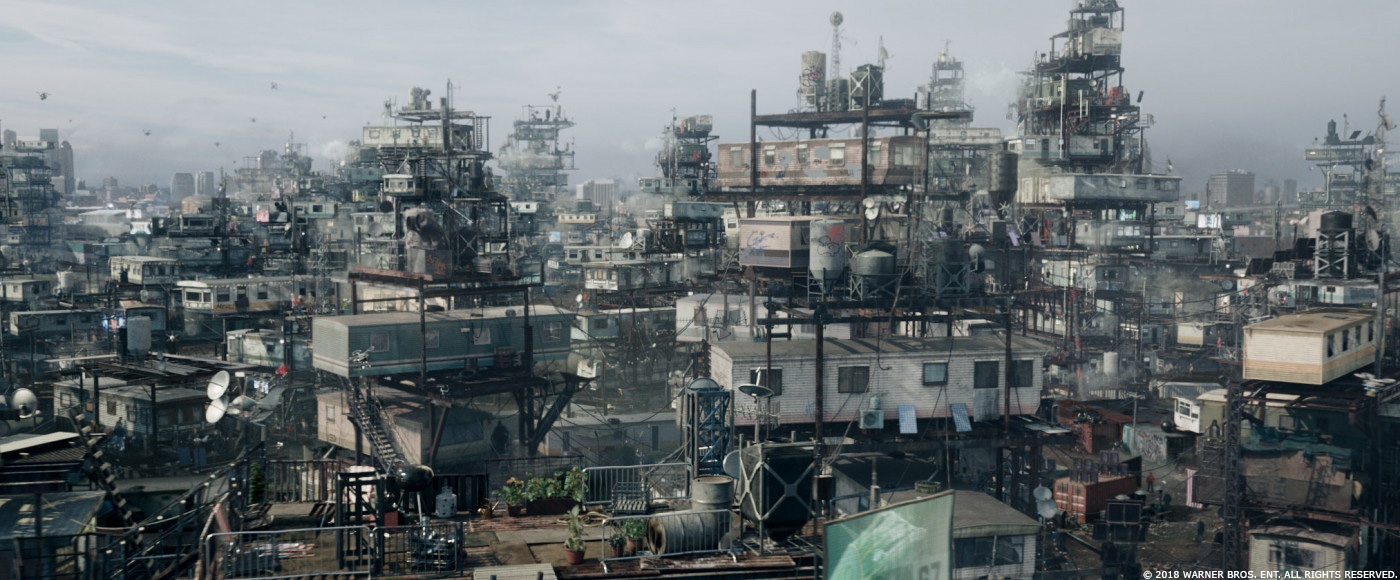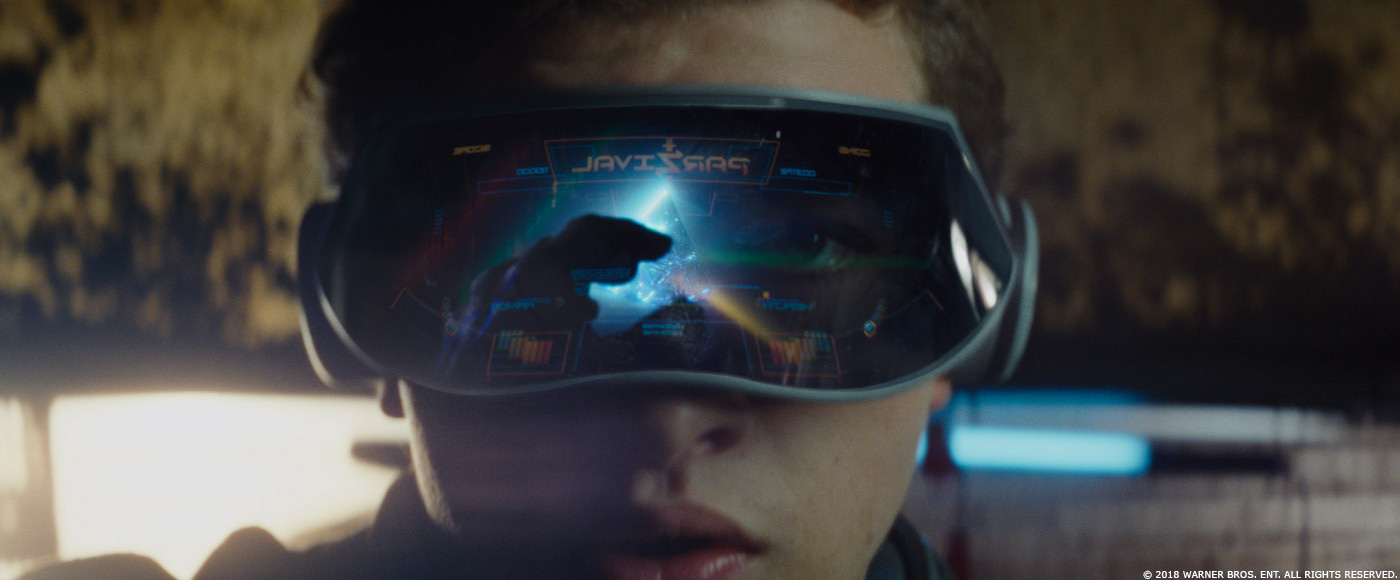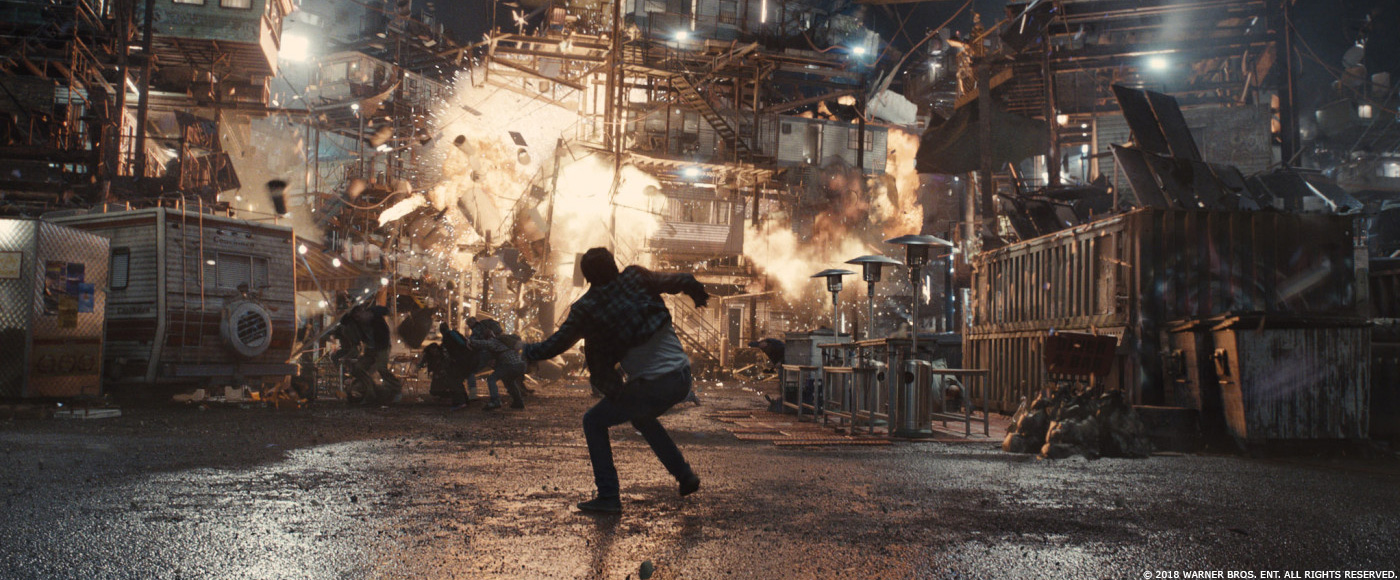In 2013, Matthew Butler told us about Digital Domain‘s work on ENDER’S GAME. He then worked on PIXELS. He talks to us today about his first collaboration with director Steven Spielberg for READY PLAYER ONE.
Few months ago, Scott Meadows, explained to us the work of pre-visualization of Digital Domain on BLACK PANTHER.
How did you get involved on this film?
We began our work on READY PLAYER ONE after being initially awarded motion capture work, with a shoutout to former Digital Domain staffer Gary Roberts. We were then awarded a piece of previs work which led to us doing previs for the entire film, handled by my colleague Scott Meadows. Finally, we were awarded all of the visual effects for the real-world shots.
Initial thoughts when working with Steven?
My first thought when it came to working with Steven Spielberg was, “Don’t mess up.” It was such an honor and privilege to work with him. Steven welcomed us and made us feel at home from the beginning. He’s very collaborative and it was great to be in the same room with him and get to solve together what he was envisioning. He was always willing to listen to any idea.
Did Steven have any expectations about the visual effects?
Steven wanted our work to be grounded in realism. No matter what the visual effect was, a drone needed to fly like a drone and whatever was happening needed to be physically plausible. Even in shots involving Wade’s Haptic Boot suit, the energy in the suit had to be cool and interesting but still physically realistic.
On Steven’s approach to Visualization:
// Scott Meadows – Head of Visualization: We took Steven’s sketches and ideas that we knew resonated with him and dove into iterating the sequence based on what we thought he’d like. If there were any cool gags we’d animate them and piece it together with the script. It was such an honor to be able to collaboratively solve what he visually wanted.
Steven used myself and my team to visualize his thoughts and we became a part of the brainstorm mechanism.
Did you receive specific indications and references for the previs?
// Scott Meadows – Head of Visualization: We started out with concept art and a list of Warner Bros. characters and assets that we could use. We came up with the scorpion’s army. For the race, we had all the assets and began cleaning things up and organizing them. We wanted it to look like a realistic New York but we also did things like interjecting a little more speed racer to stay true to the overall feel of the film.
We were involved in a lot of the brainstorming and helped formulate what was visually possible for the film. We worked to ensure that nothing went to waste and that every shot counted and that work really shines through at the ending of the race sequence. We have an awesome team filled with all stars.
How was it working with VFX Supervisor Roger Guyett?
Roger Guyett and Grady Cofer from ILM were so great to work with. We were able to collaborate very easily with them.
How did you organize the work?
My DFX Supervisor Joel Behrens was instrumental in the organization of the work among the two main studios in Vancouver and LA. He has a great awareness of budgets, skill sets and availability of the crew. He made sure to organize the work according to everyone’s strengths.
Steven likes long shots, how did that affect the work?
I’m not sure that it really did. Long shots force you to hone in on the details. Quick cuts can be more forgiving.
How was it working with ILM?
We were deliberate about establishing good communication across our teams. When you’ve got systems passing data back and forth including renders, you really need to know what’s going on to the other side. The two studios got along really well and had a very clean split of work which made things a lot less complicated. Where there was overlap like in Wade’s avatar appearing in hologram form, we ensured there was a lot communication and full planning behind it. You needed one studio to be finalized with the look in order for you to finalize the shot so schedules overlapped and true collaboration is a must.
What are the VFX sequences that we are responsible for the film?
We were awarded all the real-world scenes including the following:
- The Stacks
- The War Room
- Loyalty Center
- Explosion in the Stacks
- X1 BootSuit – haptic suit
- Digital Replacement of Wade
- Additional ancillary work
- Flying drones, car chase
Were there any more details about the animation work that we want to talk about?
The hologram of Wade’s avatar, Parzival, was something that we really tried to apply fresh ideas and thinking. We pitched the idea to have these corpuscles–little particles–of light that had a physical constraint to them. The light would be constrained to and take inertial queues from Parzival’s “actual” body and move with an organic fluid-like flow.
We did our best to ground everything in physical reality. A great example of this was the dynamic simulation of the destruction of the stacks. If you want something to look real then you’re bound to physics. During the explosion sequence, the structure yields and fails in a way that a real structure would–metal buckles, tarps shear and cables snap.
Regarding the stacks, what was the real size of the Columbus practical sets?
There were 5-6 semi-built stacks about four to five trailers high using about twenty trailers. They created enough practical elements for tight shots and physical interaction with it. Digital Domain came in and extended what they built digitally adding many hundreds more and building the stacks further out and up.
How did you work with the art department?
Adam Stockhausen was very collaborative. Any design-conscious work we did we passed by Adam including the hologram, war room, stacks and haptic suit. We worked with him a lot to get the stacks’ urban sprawl just right. He wanted the stacks to look like structures that grew over time and weren’t overly planned out but was put together as needed, evolving over time and serving its function.
Creation of the Stacks?
Steven shot the real world anamorphically on film because he wanted to ensure that in the juxtaposition of the real world and the Oasis, the real world had a gritty aesthetic that very obviously differentiated it from the clean, polished Oasis world.
How did we populate the Stacks?
In order for the digital asset to feel real, it needed to feel lived in so we created hundreds of digital humans, CG cars, CG flying drones, and functional items such as ladders, bbqs, and stair cases that implied life. We took ideas from the actual set and built upon them by adding moving smoke, dust and even hundreds of wind turbines.
Can you explain in details about the beautiful shot when Wade put his helmet on?
We previsualized this shot several times to get it just right. On set, Steven described what he wanted to achieve. He wanted to get the audience into Wade’s mind by giving them that point of view vantage point and it dawned on me that the only way to achieve it would be to digitally create Wade’s body. It isn’t physically possible to create a continuous shot where Wade lifts the goggles onto his face and we see his perspective due to the size of the camera. Janusz used a Frazier lens to get as close as possible to him and Steven choreographed a move where as Tye lifts the goggles up toward his head, we then transitioned into a fully digital version of Wade.
What was the most complicated and your favourite shot or sequence and why?
The hologram of Wade’s avatar, Parzival, was absolutely my favorite and it was also the most challenging. It was something that we needed to design fully, as we wanted it to be fresh and exciting, yet have the audience be able immediately recognize what it was. During brainstorming with Steven and Adam, we imagined how it would have actually happened. In a similar way that there’s digital distortion during a transmission, the computer creating the hologram is constantly playing catch up in a way that is not distracting from the dialogue but provides interesting activity around him. There’s something so exciting about doing something that has never been done before, a challenge to solve.
What is your best memory on this show?
My best memory on the show was when our Head of Visualization Scott Meadows and I were sitting alongside Steven and Kristie and we were discussing the possibilities. I had to pinch myself because it was so amazing to have the opportunity to play a part in bringing Steven’s vision to life.
How long have you worked on this show?
I worked on the show for about 2 years.
What’s the VFX shots count?
About 300.
What was the size of your team?
About 250.
Did you sneak any easter eggs in the film? As Steven Spielberg and screenwriter Ernest Cline said that “the visual effects artists at Digital Domain and ILM both snuck their own things in the background, knowing that we wouldn’t spot them.”
We didn’t necessarily hide any easter eggs in the film.
Digital content can look too pristine at times so in an environment like this, we had to mess it up a bit adding texture maps of graffiti everywhere. Only our graphics team knows what is mixed up in all of that.
A big thanks for your time.
// WANT TO KNOW MORE?
Digital Domain: Dedicated page about READY PLAYER ONE on Digital Domain website.
© Vincent Frei – The Art of VFX – 2018


